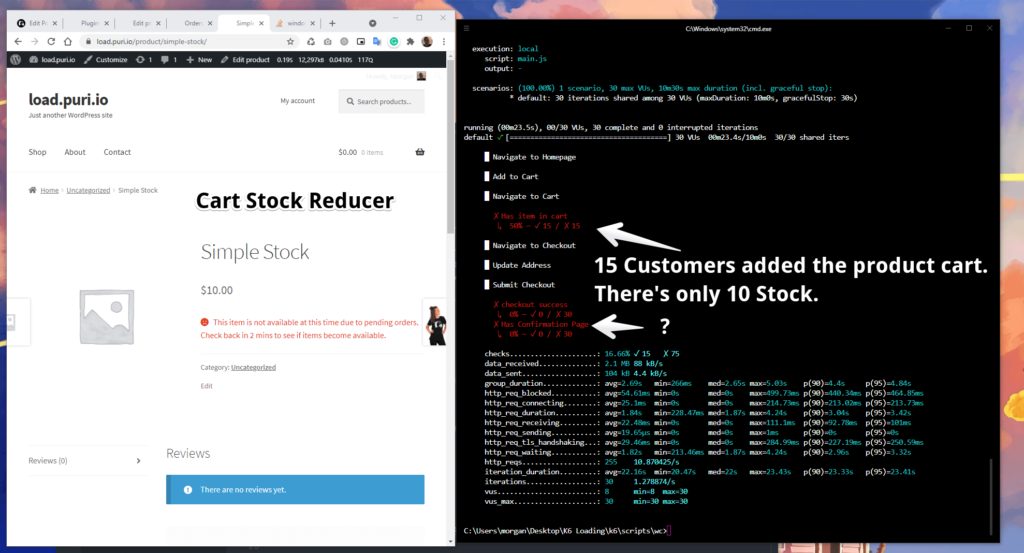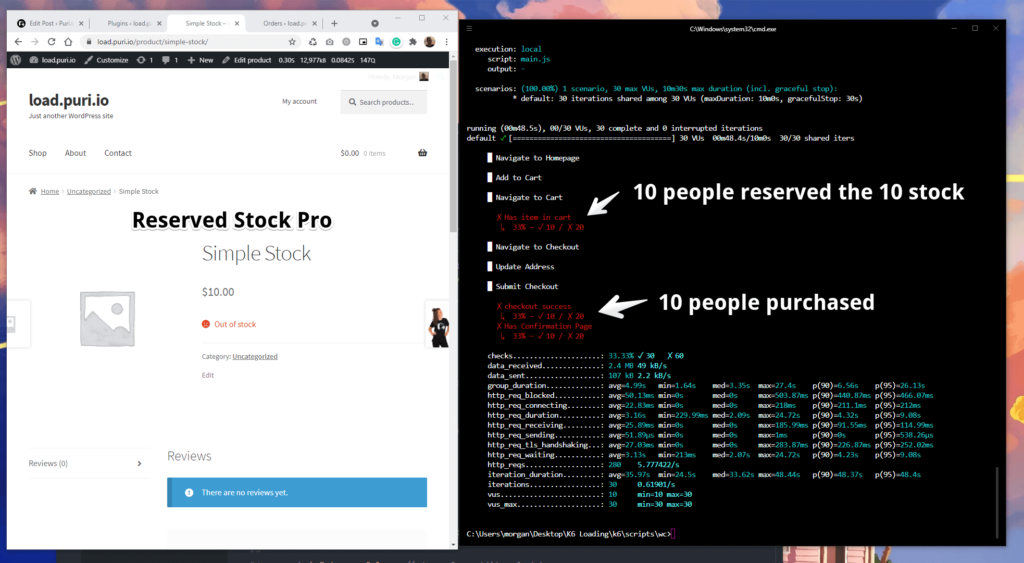Today I’ll be comparing the WooCommerce Cart Stock Reducer plugin to our Reserved Stock Pro plugin.
Why? I’ve received numerous messages from people who have been using WooCommerce Cart Stock Reducer and want to know the technical differences and if they should use Reserved Stock Pro as an alternative solution.
Both plugins aim to reduce product stock when customers add a product to their cart. Tracking stock early prevents overselling and gives customers a nicer experience during flash sales. Otherwise, the product could be sold out before the customer has finished the checkout, which often results in disappointed customers. That’s why we are here to help!
| Feature | Cart Stock Reducer (v3.40) | Reserved Stock Pro (v1.2.3) |
|---|---|---|
| Flexible time in cart | Yes | Yes |
| Stock is tracked in: | The plugin fetches all customer sessions (wp_woocommerce_sessions) to calculate the reserved quantity of a product. This method can be problematic on larger stores with frequent sales. | The plugin stores each reservation in a custom database table (rsp_reserved_stock ) allowing for fast and precise database queries for specific products. |
| Includes a countdown | Yes (uses jQuery, not visible on every page) | Yes (Pure JavaScript , visible on every page if turned on) |
| Supports shared stock between variations | Yes | Yes |
| Object Caching | No | Yes |
| Intergration with third-party cache plugins | No | Yes |
| Will prevent customers from adding too much to carts. | No (See our test below) | Yes |
I have recently been talking to people who have 800-1000 concurrent customers attempting to buy products at the same time. Our goal was to simulate high traffic and finetune Reserved Stock Pro performance at scale (another post about this is coming).
I can confidently say that in all the tests, the stock was never over-reserved. If you have 500 inventory of a specific product and 800 people attempt to buy one each within 2 minutes, 500 people will successfully add the product to their cart.
A concurrent customer test.
Let’s run a small-scale test to see if we can find any issues between Reserved Stock Pro and Cart Stock Reducer.
I’ve got a demo store where both plugins are installed and a product with 10 inventory.
I’m using K6.io and their latest WooCommerce sample to simulate 30 users adding the product to their cart, going to the cart, filling out the checkout form, and getting to the purchase confirmation page.
Cart Stock Reducer

First attempt:
- 15/30 customers reserved the product in cart.
- 0/30 customers successfully purchased the product.
Well, this was unexpected. There were only 10 in stock and 15 customers got the product added to their cart. So, I decided to run the tests a few times.
Second attempt:
- 10/30 customers reserved the product in cart.
- 10/30 customers successfully purchased the product.
Third attempt:
- 15/30 customers reserved the product in cart.
- 0/30 customers successfully purchased the product.
On the third attempt, we had the exact same error as the first attempt.
Reserved Stock Pro

First attempt:
- 10/30 customers reserved the product in cart.
- 10/30 customers successfully purchased the product.
Second attempt:
- 10/30 customers reserved the product in cart.
- 10/30 customers successfully purchased the product.
Third attempt:
- 10/30 customers reserved the product in cart.
- 10/30 customers successfully purchased the product.
These are the expected and consistent results you require as a store owner and customer.
Wrapping up
If you are currently using Cart Stock Reducer in your store, you’d likely know how it performs. Small stores with low traffic may not notice any issues, but if you are running a larger “mission-critical” store then you are welcome to try our Reserved Stock Pro and compare it for yourself.
We also have a technical explanation of Reserved Stock Pro operates under the hood.


We’re looking into load testing, and stumbled upon this post in my search. Something like this plugin was already on our radar, but I’m curious to know more about your test environment for these types of tests. You also mentioned you have people talking about having 800 – 1000 concurrent users trying to buy the same product at the same time. I would LOVE to know their environment info to understand how they’re able to handle that many concurrent users. We’ve tried so many different caching tools, performance plugins, etc. Our site starts to crawl with anything above 40 concurrent users. It’s something we’re desperately trying to solve, but thus far, nothing seems to be improving it to the point where it can handle actual large amounts of traffic. I’d be very happy if we were able to handle just 500 concurrent users without issue. Do you have any other solutions that may help with this, or suggestions? I’ll browse around the rest of your site tomorrow, end of the day here, so heading home.